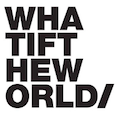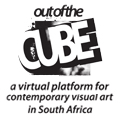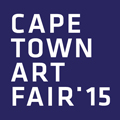Current Review(s)
Mime: an Interview with Dale Washkansky
Dale Washkansky at Commune.1Dale Washkansky’s works often deal with Jewish and sexual identity, memory and post-memory, the holocaust and the language of photography.
In his current exhibition, ‘Mime’, at Commune1, you enter onto a series of exuberant sculptural busts, which combine a traditional military form with bright interruptions. A black enameled man is covered with gold porcelain birds, and skewered by sheets of brass. In another work, a spray of plastic flowers emerges from its face, while the uniform is painted a lurid peach. As the series continues, the sculptures become increasingly abstracted. The walls surrounding this sculptural installation were filled with collages, which had been re-photographed and printed. Dale and I had an email exchange about his exhibition.
05 December 2013 - 23 January 2014
Listings(s)
'A Space Between', 'Imperial', and 'Notre Peau'
Dale Washkansky, Neil Niewhoudt and Maurice Mbikayi at AVADale Washkansky presents 'A Space Between' in the Main gallery. As Washkansky locates himself in relation to the holocaust, his photographic works remind us to consider the individual within the enormity of genocide. Landscapes photographed by Washkansky in 2008 at two former concentration camps in Germany (Buchenwald and Ravensbrück) are exhibited in relation to cyanotype prints on springbok hides . The different photographic material utilised amplifies the contrast of reality and memory, personal stories within public histories.
Maurice Mbikayi employs the Long gallery with 'Notre Peau (Our Skin)'. Mbikayi investigates the effects of technology on identity and history whilst unpacking the various ways in which the technological revolution has both positively and negatively impacted on Africa. Evocative portraits are created out of discarded technology; computer matter becomes skin as cell phones become hearts.
Neil Nieuwoudt employs the Artstrip with a mixed media body of work entitled 'Imperial'. Nieuwoudt plays with materiality, line and colour in his collage and animation works, which are reminiscent of the Rorschach test in their abstraction and conceptual parameters.
24 January 2011 - 18 February 2011
'Mime'
Dale Washkansky at Commune.1Conceived as an exhibition that unpacks the concept of traumatic repression, ‘Mime’ encourages viewers to remember otherwise silent and concealed histories. The artist wields kitsch and collage in a manner that destabilises historical form. The resulting works are often irreverent in their appearance and employ strategies of humour to further challenge the locked narrative construction that so often occurs with traumatic history.
To mime is to use gesture and movement to convey the idea of another action. Used within the context of this exhibition it is a performative motion that grapples with the question of how history can be'mimed'. Washkansky’s re-photographed collages comment on the notion of post-memory. Just as these collages can only be accessed through their photographic duplicate, so too can the past only be accessed through its mediated representation. Although the past is therefore distanced and open to misrepresentation, it also allows for appropriation and re-interpretation. The images are crude and simplistic in their construction in order to maintain the sense that they are not fixed or resolved- they remain uncomfortably incomplete. Similarly, the gaudiness of Washkansky’s sculptures refute the austere and stern aesthetics of the original busts of Hitler that were mass-produced during the 1930s and, at the time, often found on the mantelpiece.
05 December 2013 - 23 January 2014



















